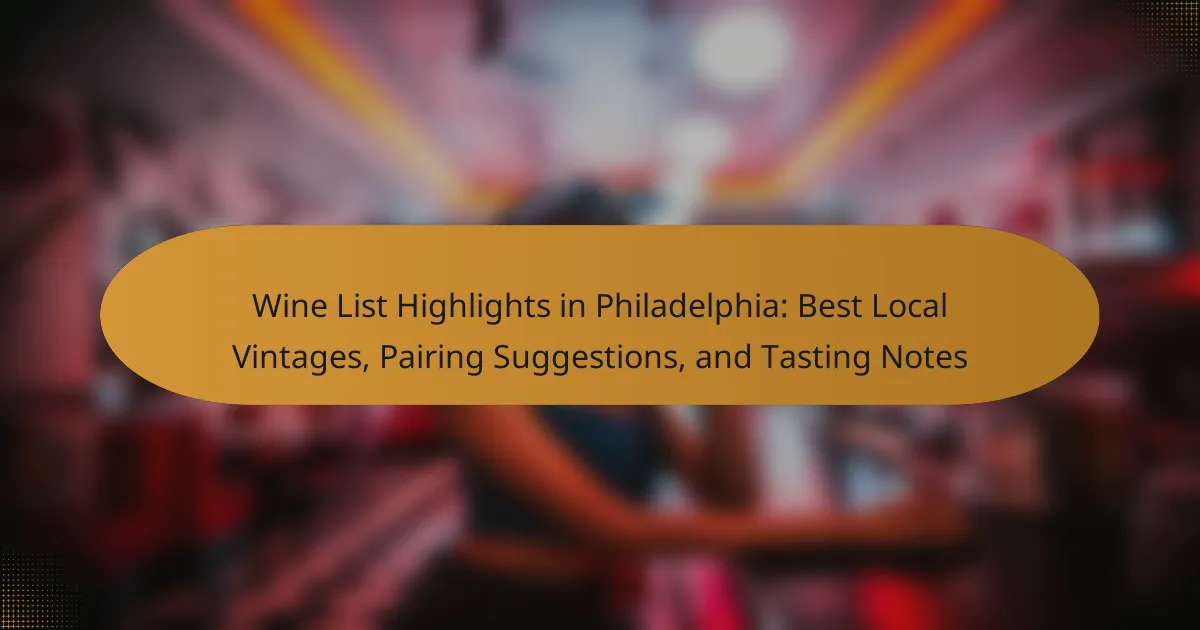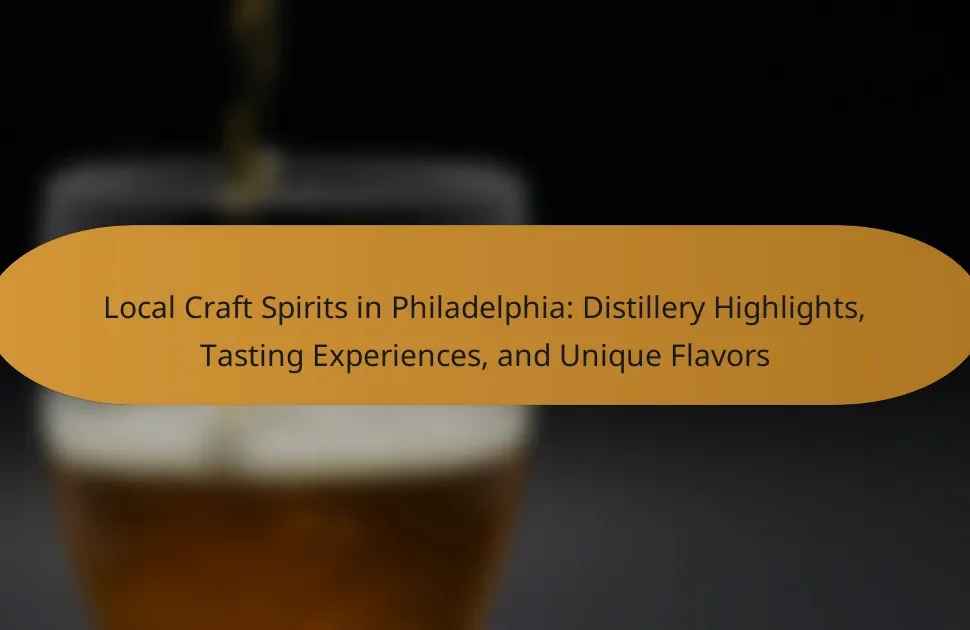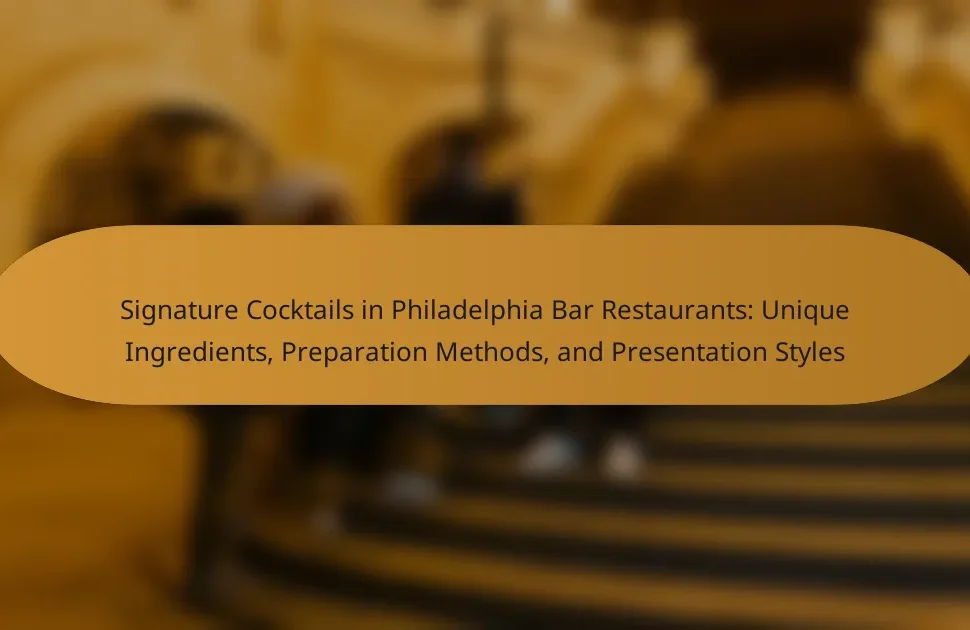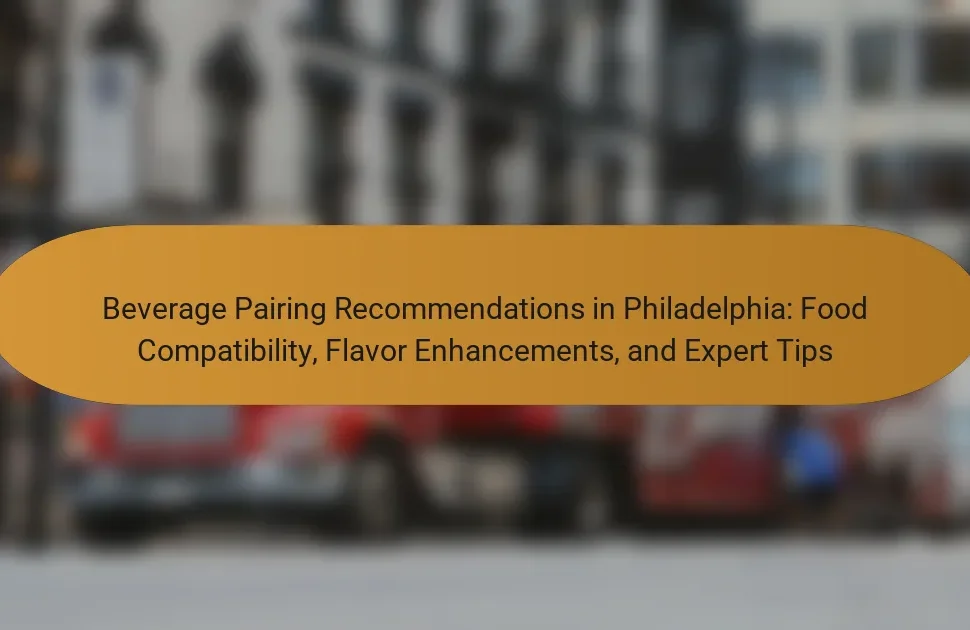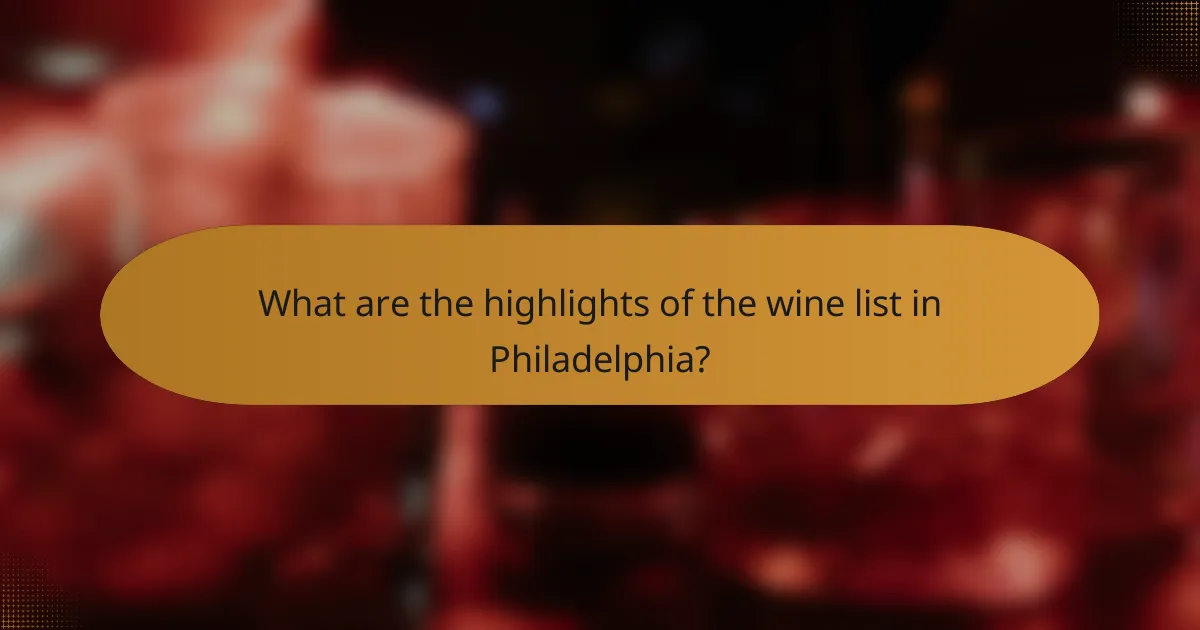
What are the highlights of the wine list in Philadelphia?
The highlights of the wine list in Philadelphia include a diverse selection of local vintages. Notable wineries such as Chaddsford Winery and Penns Woods Winery are often featured. Many lists emphasize unique blends and varietals from the region. Pairing suggestions frequently accompany wines, enhancing the dining experience. Tasting notes provide detailed descriptions of flavor profiles. Seasonal offerings reflect the changing local harvests. Special events often showcase limited releases and winemaker dinners. Philadelphia’s wine culture is vibrant, with a focus on both quality and local sourcing.
How does Philadelphia’s wine scene compare to other cities?
Philadelphia’s wine scene is emerging but still smaller compared to cities like Napa Valley or New York. The city features a growing number of local wineries and wine bars. Notably, Philadelphia has a unique focus on local and sustainable wines. The region benefits from a diverse climate that supports various grape varietals. Wine events and festivals are increasingly popular, attracting enthusiasts. However, Philadelphia lacks the extensive vineyard landscape found in more established wine regions. Overall, while Philadelphia’s wine scene is vibrant, it continues to develop in comparison to more renowned wine cities.
What factors contribute to Philadelphia’s unique wine culture?
Philadelphia’s unique wine culture is shaped by its diverse local vineyards, historical significance, and culinary scene. The region boasts a variety of wineries that produce distinct wines, reflecting local terroir. Pennsylvania’s wine laws encourage innovation and experimentation in winemaking. The city’s vibrant food culture promotes wine pairing with local cuisine. Numerous wine festivals and events celebrate this culture, fostering community engagement. Additionally, the influence of local sommeliers and wine educators enhances public appreciation of wine. Philadelphia’s proximity to major wine regions also contributes to its access to a wider selection of wines.
How has the local wine scene evolved over the years?
The local wine scene in Philadelphia has evolved significantly over the years. Initially, the city had limited wine offerings primarily focused on imports. Over the past two decades, local wineries have emerged, producing diverse varietals. The Pennsylvania Wine Association reported a 300% increase in wineries since 2000. Consumers have become more adventurous, seeking out local vintages. Wine bars and restaurants now emphasize regional selections. Events like the Philadelphia Wine Festival showcase local producers. This growth reflects a broader trend towards supporting local agriculture and sustainability. The evolution has enriched the cultural fabric of Philadelphia’s dining scene.
What are the best local vintages available in Philadelphia?
The best local vintages available in Philadelphia include wines from the surrounding Pennsylvania vineyards. Notable producers are Chaddsford Winery and Penns Woods Winery. Chaddsford is known for its Chardonnay and Cabernet Franc. Penns Woods specializes in Merlot and Viognier. These wineries have received accolades at regional wine competitions. The local climate supports a variety of grape types, enhancing quality. Philadelphia’s wine scene features these local vintages prominently in restaurants and wine shops. Enthusiasts often recommend these wines for their unique flavor profiles and regional character.
Which wineries are known for their exceptional wines in the area?
Chaddsford Winery and Penns Woods Winery are known for their exceptional wines in the Philadelphia area. Chaddsford Winery is recognized for its award-winning Chardonnay and Cabernet Franc. It has been producing wines since 1982 and is a staple in the local wine scene. Penns Woods Winery specializes in blends that highlight the region’s terroir. Their Meritage blend has gained acclaim for its complexity and flavor profile. Both wineries offer tastings and tours, showcasing their unique offerings.
What specific varietals should wine enthusiasts look for?
Wine enthusiasts should look for varietals such as Cabernet Sauvignon, Merlot, and Chardonnay. These varietals are well-regarded for their complexity and flavor profiles. Cabernet Sauvignon offers bold tannins and dark fruit notes. Merlot is known for its smooth texture and fruity characteristics. Chardonnay can range from buttery to crisp, depending on the region and winemaking style. Additionally, Pinot Noir is a popular choice for its elegance and versatility. These varietals are commonly found in Philadelphia’s local wine selections. Their popularity is supported by numerous wine awards and critical acclaim in tastings.

What are the best pairing suggestions for local wines?
Local wines pair best with regional foods. For example, a local Chardonnay complements seafood dishes like crab or scallops. A Cabernet Sauvignon pairs well with grilled meats, particularly steak. Local Pinot Noir enhances flavors in roasted chicken and mushroom dishes. Pairing local Riesling with spicy Asian cuisine creates a balanced experience. These combinations are based on flavor profiles and acidity levels. Studies show that food and wine pairings enhance the overall dining experience.
How can food enhance the experience of local wines?
Food can enhance the experience of local wines by complementing their flavors. Specific food pairings can elevate the taste of the wine. For example, rich cheeses can enhance the creaminess of a Chardonnay. Spicy dishes often balance well with sweet Rieslings. Grilled meats can bring out the robust notes in a Cabernet Sauvignon. Additionally, local cuisine can reflect regional wine characteristics. This connection can create a more immersive tasting experience. Studies show that proper food and wine pairings can improve overall enjoyment by up to 30%. Therefore, pairing food with local wines not only enhances flavor but also deepens the appreciation of both.
What are some classic food and wine pairings to consider?
Classic food and wine pairings include combinations that enhance the flavors of both. A well-known pairing is red wine with red meat. Cabernet Sauvignon complements the richness of steak. White wine pairs excellently with seafood. Sauvignon Blanc enhances the taste of grilled fish. Cheese and wine also create classic pairings. Aged cheddar goes well with a robust red like Merlot. Dessert wines, such as Port, pair nicely with chocolate desserts. These combinations are rooted in culinary tradition and enhance the dining experience.
How do local dishes complement Philadelphia’s wines?
Local dishes enhance the experience of Philadelphia’s wines through complementary flavors and textures. The city’s culinary scene features rich, hearty foods that pair well with local varietals. For instance, cheesesteaks match nicely with bold red wines, highlighting the savory elements. Seafood dishes, like crab cakes, complement white wines, enhancing their crispness. Additionally, soft pretzels and beer cheese dip can be enjoyed with lighter wines, balancing saltiness with acidity. These pairings create a harmonious dining experience, showcasing the region’s unique flavors. Local chefs often design menus specifically to enhance the tasting notes of Philadelphia wines.
What tips can enhance wine and food pairing experiences?
To enhance wine and food pairing experiences, consider the following tips. Match the weight of the wine with the dish. For example, a full-bodied red wine complements hearty meats. Conversely, light white wines pair well with seafood and salads. Balance flavors by contrasting or complementing them. Sweet wines can enhance spicy dishes, while acidic wines cut through rich, fatty foods. Experiment with regional pairings, as local wines often complement local cuisine. Additionally, consider the preparation method of the food. Grilled dishes often pair well with smoky wines. Lastly, trust personal preferences; enjoyment is key in wine pairing.
How should one approach flavor profiles when pairing?
To approach flavor profiles when pairing, one should consider the balance between complementary and contrasting flavors. Complementary pairings enhance similar taste notes, such as pairing a fruity wine with a fruit-based dish. Contrasting pairings create interest, like matching a sweet wine with a salty cheese. Additionally, consider the weight and intensity of both the food and wine. Lighter dishes pair well with lighter wines, while richer foods require fuller-bodied wines. The acidity level is also crucial; high-acid wines can cut through fatty foods, enhancing the overall experience. Research indicates that successful pairings often rely on these principles to elevate the dining experience.
What common mistakes should be avoided in wine pairing?
Common mistakes in wine pairing include ignoring the weight of the dish. Light dishes require lighter wines, while rich dishes pair well with fuller-bodied wines. Another mistake is overlooking acidity. Foods with high acidity need wines that match this characteristic. Additionally, pairing wine with overly spicy foods can overwhelm the wine’s flavors. Choosing wines based solely on personal preference, rather than the dish, can lead to mismatches. Finally, neglecting to consider the sweetness level of the food can result in an unbalanced pairing.
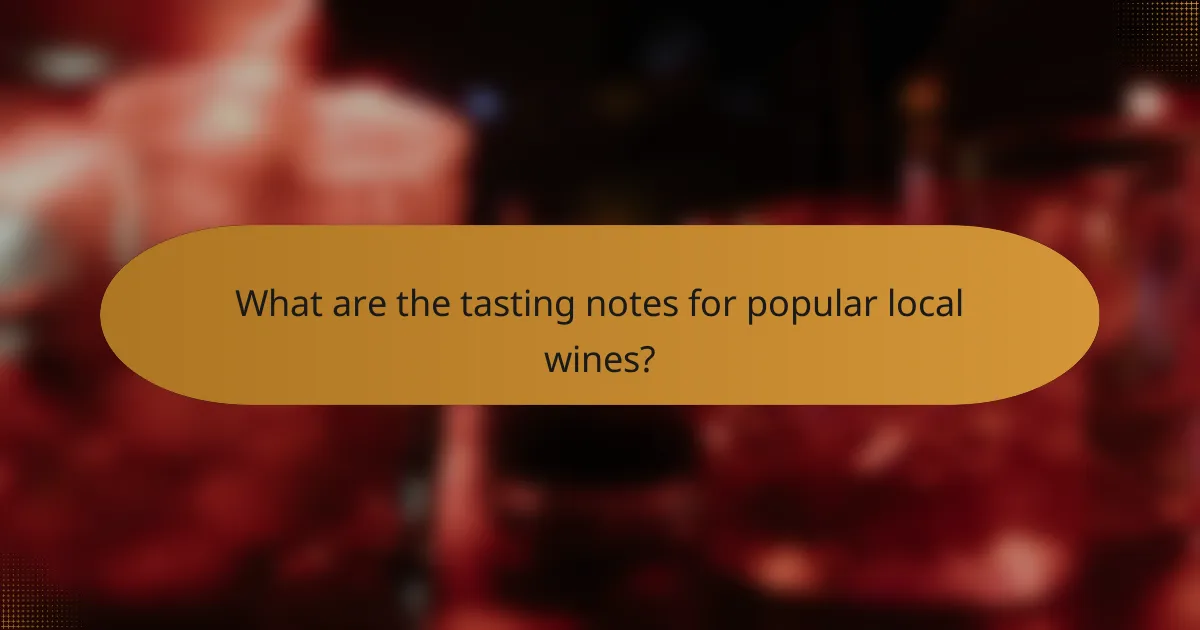
What are the tasting notes for popular local wines?
The tasting notes for popular local wines in Philadelphia vary by type. For red wines, expect notes of dark fruits like blackberry and plum. Some may have hints of spice, oak, or chocolate. White wines often feature citrus flavors such as lemon and grapefruit. They may also include floral or herbal undertones. Rosé wines typically exhibit strawberry and watermelon notes. Sweet wines can present flavors of honey and ripe peach. Each wine reflects the regional terroir, impacting its flavor profile significantly. Local wineries often emphasize these tasting notes in their descriptions.
How do tasting notes help in understanding wine characteristics?
Tasting notes help in understanding wine characteristics by providing detailed descriptions of flavors, aromas, and textures. These notes summarize sensory experiences associated with each wine. They often include specific terms like fruity, floral, or earthy. This vocabulary aids consumers in identifying their preferences. Tasting notes also highlight the wine’s acidity, tannins, and body. Such attributes help in assessing the wine’s quality and aging potential. Additionally, tasting notes can reference the wine’s origin and grape variety. This contextual information enhances the overall understanding of the wine’s profile. Ultimately, tasting notes serve as a guide for both novices and connoisseurs in selecting wines that suit their tastes.
What specific tasting notes are associated with notable local vintages?
Notable local vintages from Philadelphia exhibit specific tasting notes that reflect their unique terroir. Common notes include ripe cherry, blackberry, and plum, which are prominent in red wines. White wines often showcase citrus, green apple, and floral aromas. Some vintages also present earthy undertones, such as mushroom or forest floor, enhancing complexity. Additionally, oak aging contributes vanilla, spice, and toasted notes to select wines. These characteristics are influenced by the region’s climate and soil composition, which support diverse grape varieties.
How can one effectively describe the flavors and aromas of a wine?
To effectively describe the flavors and aromas of a wine, one should use specific sensory language. Begin by identifying the primary fruit notes, such as berry, citrus, or stone fruit. Next, incorporate secondary aromas like floral, herbal, or earthy elements. Consider the wine’s body and texture, which can range from light to full-bodied. Mention the acidity and tannin levels, as these influence the overall taste experience. Use terms like “crisp,” “smooth,” or “velvety” to convey mouthfeel. Describing the finish is also important; note whether it is short, medium, or long-lasting. This structured approach allows for a comprehensive and vivid portrayal of the wine’s characteristics.
What are the current trends in wine tasting in Philadelphia?
Current trends in wine tasting in Philadelphia include an emphasis on local wines and sustainable practices. Many wine tasting events now feature Pennsylvania wineries. Participants are increasingly interested in organic and biodynamic wines. There is a growing popularity of virtual wine tastings, allowing broader access. Food pairing experiences are becoming more common at tastings. Educational components, such as workshops on wine regions, are also trending. Additionally, social media influences wine tasting choices, with many seeking recommendations online. These trends reflect a shift towards experiential and community-focused wine tasting.
How are local wine tastings organized and what can participants expect?
Local wine tastings are organized by wineries, restaurants, or event planners. These events typically feature a selection of wines for participants to sample. Often, they include guided tastings led by knowledgeable hosts. Participants can expect to learn about the wines’ origins, tasting notes, and pairing suggestions. The events may also include light snacks or appetizers to complement the wines. Some tastings require advance reservations due to limited space. Others may allow walk-ins, depending on the venue. Overall, local wine tastings provide an educational and enjoyable experience for wine enthusiasts.
What educational opportunities exist for wine tasting in the city?
Wine tasting educational opportunities in the city include classes, workshops, and guided tastings. Local wineries and wine shops often host events for beginners and enthusiasts. Community colleges may offer courses on wine appreciation and tasting techniques. Some restaurants provide wine pairing dinners with educational components. Online platforms also feature virtual wine tasting sessions with expert guidance. These opportunities help participants enhance their knowledge and enjoyment of wine.
What practical tips can enhance your wine tasting experience?
To enhance your wine tasting experience, consider the following practical tips. First, choose the right glassware. Specific shapes can enhance the aroma and flavor of different wines. Second, serve wine at the appropriate temperature. Red wines typically taste best at 60-65°F, while white wines are ideal at 45-50°F. Third, take time to observe the wine’s color. This can give insights into its age and quality. Fourth, swirl the wine gently in the glass. This releases aromatic compounds, enhancing the olfactory experience. Fifth, take a moment to smell the wine before tasting. This prepares your palate and heightens the tasting experience. Sixth, sip the wine slowly. This allows you to appreciate the full range of flavors. Lastly, consider food pairings. Certain foods can complement or contrast the wine, enriching the overall experience.
How should one prepare for a wine tasting event?
To prepare for a wine tasting event, one should research the wines being featured. Understanding the types and regions of the wines enhances appreciation. It is beneficial to read tasting notes and reviews. Arriving with a clean palate is essential, so avoid strong foods beforehand. Bring a notebook to jot down impressions for future reference. Dress appropriately for the venue, as some events may have a formal dress code. Hydration is important; drink water throughout the event. Lastly, approach the tasting with an open mind and be ready to learn from the experience.
What tools and accessories are recommended for wine tasting?
Essential tools and accessories for wine tasting include wine glasses, decanters, corkscrews, and spittoons. Wine glasses should be tulip-shaped to enhance aroma. Decanters aerate wine, improving flavor. Corkscrews facilitate easy bottle opening. Spittoons allow tasters to dispose of wine without swallowing. These items enhance the tasting experience and ensure proper wine evaluation.
The main entity of this article is the wine list highlights in Philadelphia, focusing on the best local vintages, pairing suggestions, and tasting notes. The article outlines the diverse selection of local wines, including notable wineries like Chaddsford and Penns Woods, and emphasizes the unique characteristics of these wines. It also discusses how Philadelphia’s wine scene compares to other cities, the evolution of local wine culture, and provides practical tips for enhancing wine tasting experiences. Additionally, the article covers specific varietals to look for, classic food pairings, and the importance of tasting notes in understanding wine characteristics.
